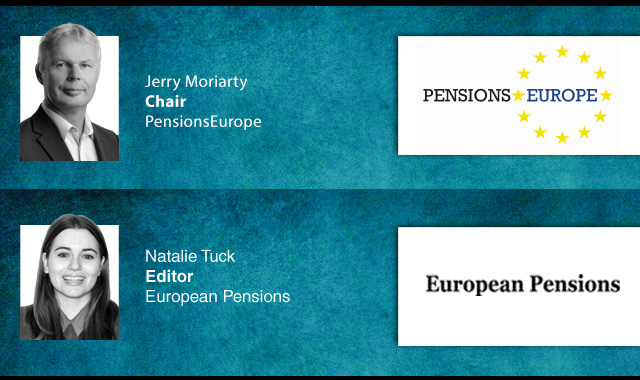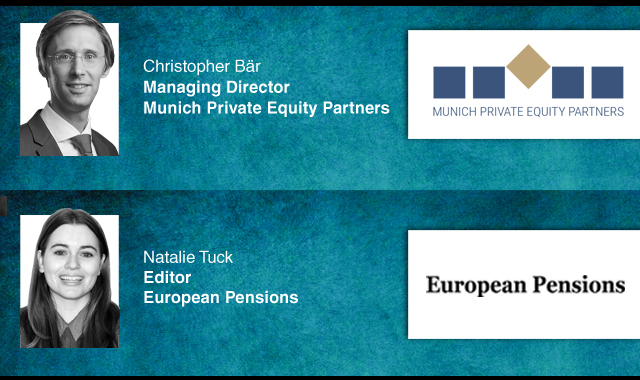European pension funds are laying the groundwork to become a more significant source of venture capital (VC) funding, according to a report from Venture Connections, European Women in VC and Pensions for Purpose, with Nordic pension funds the most active, despite growing momentum in the UK.
The report, Mapping Pension Funds Attitudes to Venture & Growth in Europe, suggested that pension funds have the chance to help savers benefit and support long-term economic renewal, estimating that while only 0.12 per cent reaches venture capital, redirecting just 1 per cent could unleash "tens of billions" for breakthrough growth.
The report found that Nordic pension funds are currently the most active in the VC space, allocating around €350m to VC.
The Nordics also demonstrated a strong home bias, keeping roughly 70 per cent of that capital within their own markets, while around 25 per cent is invested in the UK and Ireland.
In addition to this, the report found that the Nordics are not only active investors, but also a top destination for VC allocations from other European pension funds, receiving about €190m in foreign investments.
France and the Benelux region followed in VC allocation by pension funds, attracting around €175m, while Germany, Austria and Switzerland (the DACH region) were also found to be making a growing number of VC commitments, with around €115m in allocations from pension funds, the majority of which came from within the region itself.
In contrast, Southern Europe and Central and Eastern Europe significantly lag behind their peers in both domestic pension fund allocations to VC and as recipients of foreign pension fund investment.
In line with this, Western European, Nordic and Baltic countries tended to have the most flexible regulatory frameworks for pension fund allocations to alternative assets, whereas in contrast, Eastern and Central European countries operate within more conservative regulatory environments.
However, regulation was not the main reason pension funds avoid allocating to venture, as the report pointed out that most European countries do not impose explicit caps on VC allocations.
Instead, limited internal capacity and knowledge gaps were found to be major barriers for pension funds to allocate to VC.
According to the report, this created a chain reaction, as without familiarity with the broad VC space, pension funds are less likely to engage confidently or build long-term conviction in the asset class.
It also limits their ability to assess and challenge fund managers effectively.
In addition to this, it found that cultural mindset plays a role, as in Europe and the UK, VC is still seen as niche and risky, and pension investors are still finding their footing, unlike in the US, where it’s embraced as a mainstream, entrepreneurial asset class.
The report also found that scale was a key factor in private market allocations, revealing that a typical £1bn fund allocates 11 per cent to private markets, compared to 20 per cent for a £20bn fund and 2 per cent for a £100bn fund.
In light of this, the report emphasised the need to strengthen internal capacity within pension funds, shift the focus from short-term cost to long-term value, and improve market infrastructure to support venture capital allocations.
More broadly, the report found that most pension funds typically allocated to venture capital through their broader private equity mandates, not as a separate category, which the report described as a pragmatic governance decision, driven by limited internal resources and a desire for simplified oversight.
There were signs that a change is already underway; however, as the report showed, many pension funds are increasingly attracted to VC by the promise of long-term, risk-adjusted returns.
In the UK and Western Europe, climate innovation and environmental, social and governance (ESG) goals were also emerging as strong motivators.
And the report suggested that further growth could soon be seen in the UK, with initiatives such as the Mansion House Compact and Accord set to increase allocations to unlisted assets.
At least half of that will be directed specifically to UK-based investments, which are expected to inject a staggering £25bn into the domestic economy.
This is more than 40 times the amount European pension funds currently allocate to European VC.
Commenting on the report, UK Chancellor, Rachel Reeves, said: "Together, we can transform pension funds from passive investors into active builders of our economy: fuelling innovation, creating jobs, and unlocking stronger returns for savers while ensuring more capital also flows to the innovators too often overlooked.
"By unlocking institutional capital and backing more women-led and diverse businesses, we can deliver growth that is both more dynamic and more inclusive. In doing so, we secure prosperity for tomorrow while providing security in retirement for today’s savers.”
European Commissioner, Ekaterina Zaharieva, stressed that whilst Europe has the talent, the ideas and the ambition, it now needs the capital, urging European pension funds and asset managers to join in this.
"By investing in Europe’s ventures, they can deliver for their beneficiaries and for Europe alike – financing innovation, creating jobs, and building the technological strength that our sovereignty demands," Zaharieva said.
Adding to this, European Commission director-general for internal market, industry and entrepreneurship and SMEs, Kerstin Jorna, said: “[This] report provides new insights into the risks and constraints that limit pension funds’ investment in equity markets.
Lack of knowledge and expertise, the high risk of venture capital investments and regulatory barriers are some of them. The report also flags successful national initiatives and funds investing in equity. This report will feed into the reflection on how to foster a more active participation of pension funds in support of our businesses, competitiveness and innovation.”
Latest News
-
SCOOP: Netherlands' Keylane snaps up UK's Heywood in undisclosed deal
-
80% of German companies using AI in pension schemes
-
73% of global pension plans using dynamic asset allocation strategy
-
Debate prompts swing in support for releasing UK DB surpluses to employers
-
News in brief: 5 December
-
NBIM beats out Japanese govt pension fund to become world's largest asset owner
Podcast: Stepping up to the challenge

In the latest European Pensions podcast, Natalie Tuck talks to PensionsEurope chair, Jerry Moriarty, about his new role and the European pension policy agenda
Podcast: The benefits of private equity in pension fund portfolios

The outbreak of the Covid-19 pandemic, in which stock markets have seen increased volatility, combined with global low interest rates has led to alternative asset classes rising in popularity. Private equity is one of the top runners in this category, and for good reason.
In this podcast, Munich Private Equity Partners Managing Director, Christopher Bär, chats to European Pensions Editor, Natalie Tuck, about the benefits private equity investments can bring to pension fund portfolios and the best approach to take.
In this podcast, Munich Private Equity Partners Managing Director, Christopher Bär, chats to European Pensions Editor, Natalie Tuck, about the benefits private equity investments can bring to pension fund portfolios and the best approach to take.
Mitigating risk
BNP Paribas Asset Management’s head of pension solutions, Julien Halfon, discusses equity hedging with Laura Blows
© 2019 Perspective Publishing Privacy & Cookies





Recent Stories